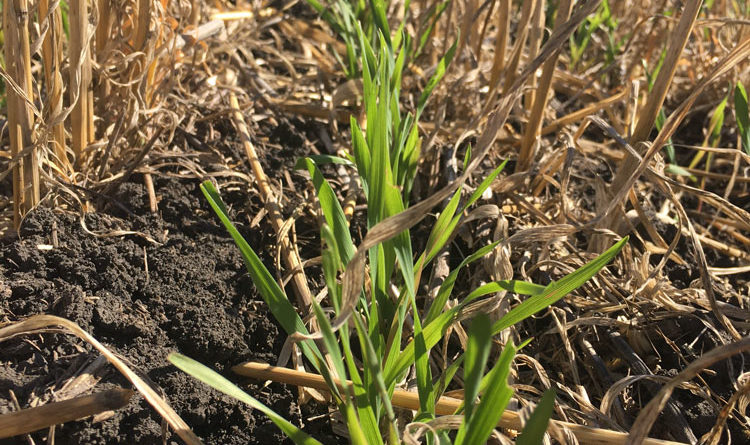Cover crop survey results released
By John Watson Local Journalism Initiative Reporter

Photo Courtesy of Callum Morrison
Researchers at the University of Manitoba (UofM) have released the results of a 2020 survey centered around prairie cover crops and the impacts the practice has for farmers.
The survey collected responses from 281 farms that grew cover crops in 2020. Wheatland County was among the top three counties in Alberta to respond to the survey, that also observed farms in Saskatchewan and Manitoba.
Between October 2020 and April 2021, Dr. Yvonne Lawley and graduate student Callum Morrison from the UofM’s Department of Plant Science asked farmers about how they utilized cover crops on their farms.
“What myself and my professor did is, just after the 2019 growing season, we designed a survey to ask farmers about what they saw in 2019. We rolled that out expecting to get a couple thousand respondents, but then COVID-19 hit,” said Morrison. “That went from being something that we were interested in to being the major focus of my work because it provided something for me to do while COVID-19 was going on.”
He explained in the first year of the study, 211 respondents participated, which he said was dramatically more than he expected.
“Because of the success of that groundwork, we realized we need to go a lot deeper. We asked farmers what sort of questions they wanted to be asked,” said Morrison.
He then went back and created the survey which was released for the 2020 study. Between the 281 respondent farmers, over 100,000 acres of land was accounted for among the three provinces.
Morrison explained the practice of growing cover crops on the prairies is relatively new and there is not very much information available on the impact of the practice, yet.
“It’s been really interesting doing this project. This is the first time we’ve really had anything like this on the prairies,” he said.
“Cover crops are grown to provide environmental and economic benefits as opposed to a cash crop.”
There are two kinds of cover crops generally seen in Alberta. A “shoulder season cover crop,” which is planted after the cash crop to protect soil from erosion and to and convert solar energy into biomass which will then be returned to the soil.
The second is a “full season cover crop,” which is grown over the entirety of the growing season, done usually to remedy problems in the soil and improve soil health.
“It is a long-term investment in soil health, which hopefully over time will provide a variety of rewards,” explained Morrison.
“Out of the farmers who responded, over 70 per cent said that they’d seen benefits from growing cover crops within the first three years.”
Morrison hosted a webinar on Nov. 3 discussing the major findings of the study and for people who were interested in learning more about cover crops and to ask questions about the practice.
